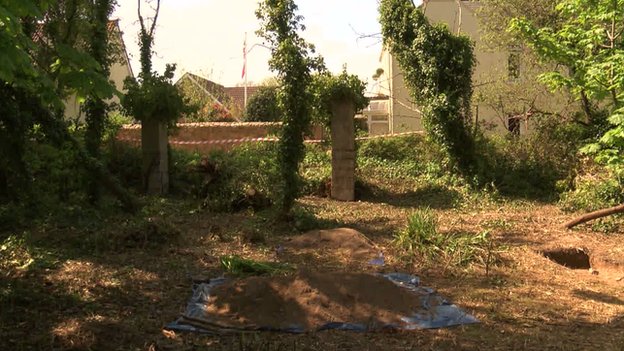Lager Wick, a labor camp operated by the Nazi regime during WWII has undergone excavation in Jersey. Lager Wick was already known for what it was, but had never before been actually located. The Cambridge archaeological team now investigating the site is led by Dr. Gilly Carr, who hopes to discover more about Lager Wick than can be gained by simply reading documentation on the site. The Nazi camp has been buried for some time, but has already yielded a few discoveries.
One of the first discoveries made was bits of concrete, which offer some information about the site’s architecture as well as its use of labor by those imprisoned there. Lager Wick was apparently the site of imprisoned workers who aided in the construction of a German railway. The Nazi camp was erected in 1942, potentially for this explicit purpose, and was in operation for at least two years thereafter until its abandonment caused it to fall into decay.
The reason this information is somewhat ambiguous is that so far, Carr and her team have yet to find anything perfectly indicative that what they are investigating is for certain a Nazi camp. They have yet to find anything with swastikas or other WWII propaganda emblazoned upon its features, and so far are largely utilizing a working knowledge of camp documentation as well as evidence gleaned from witnesses alive during the time.
To discover further evidence would be important not only to an understanding of WWII, but to the field of archaeology itself. The Nazi camp was not ever planned to be a permanent structure, and to discover more solid evidence of its use would be an indication that even temporary sites leave some historical residue to be found later. Such knowledge would speak to the benefit of further excavations in other locales, the BBC News reports.
Some obstacles have stood in the way of the excavation, such as tree roots which have overrun the site’s grounds. The site was also not highly contained during its operation, with few clearly defined borders. A more thematic obstacle stands in the way of Carr’s goal to prove the hardships of the laborers at the Nazi camp; as it turns out, according to a survivor from the area, the workers were paid.
Even if it was not exactly on par with Auschwitz in terms of horror, the Nazi camp is still historically valuable. Many simply concentrate on the horrors of the war, and do not focus on the lesser injustices. Carr has discovered a site which may call into question the extent to which even paid workers can be mistreated. Findings from the excavated Nazi camp are likely to show up at the local museum, so citizens will have an opportunity to judge the evidence on its own merit.
